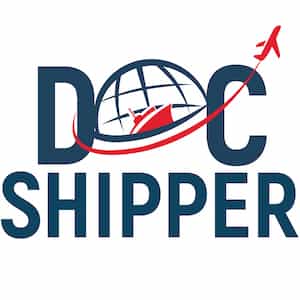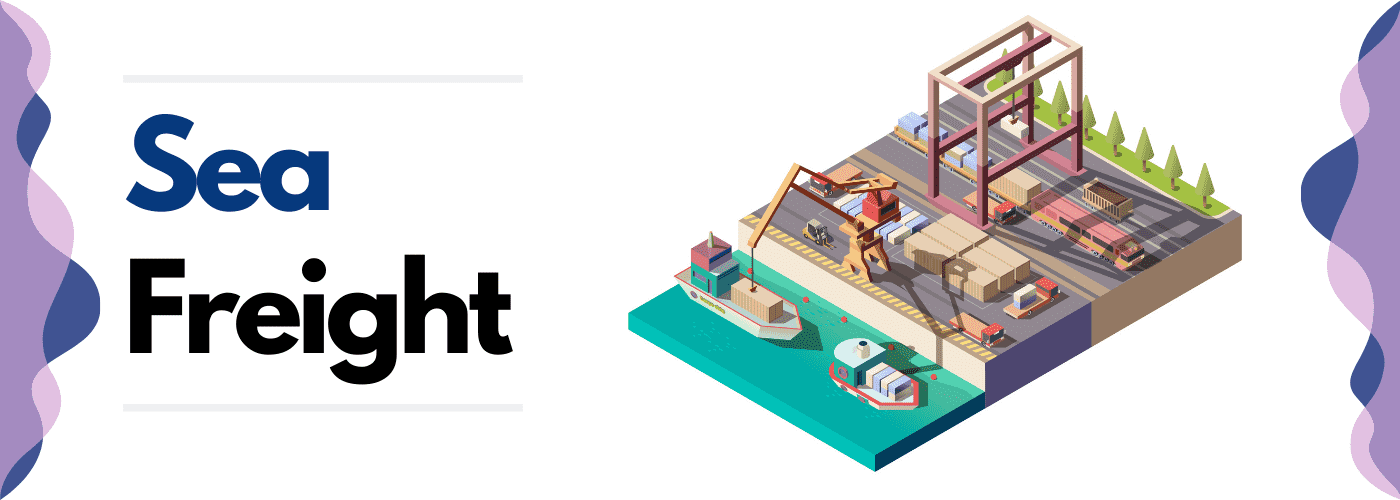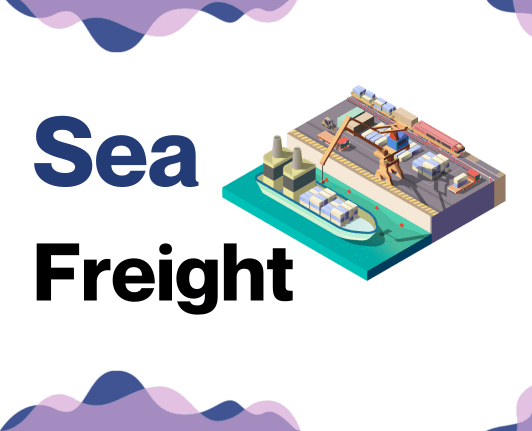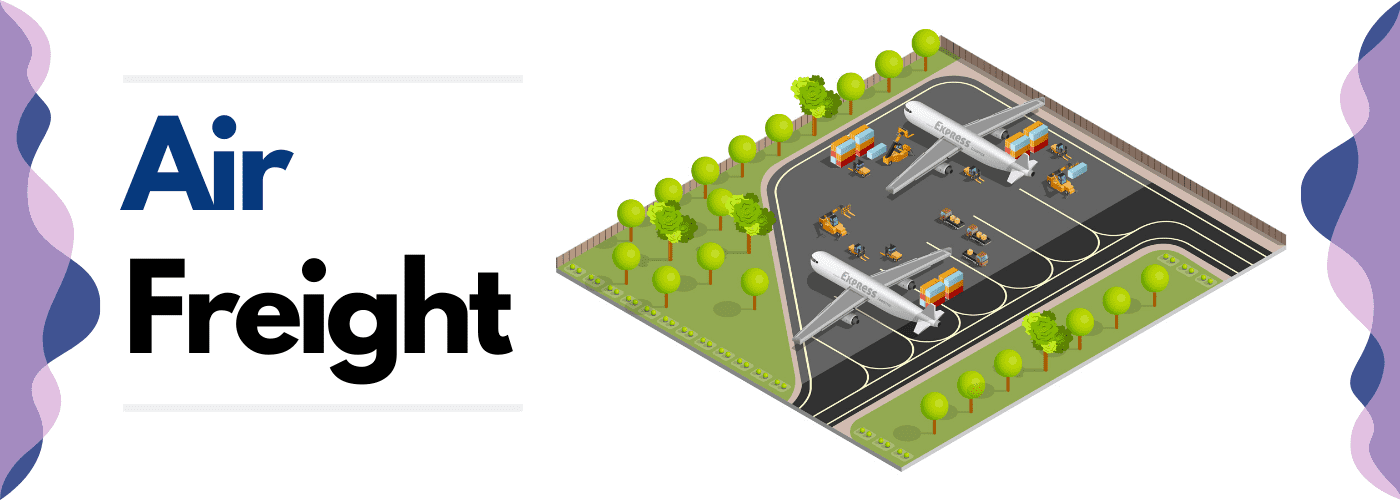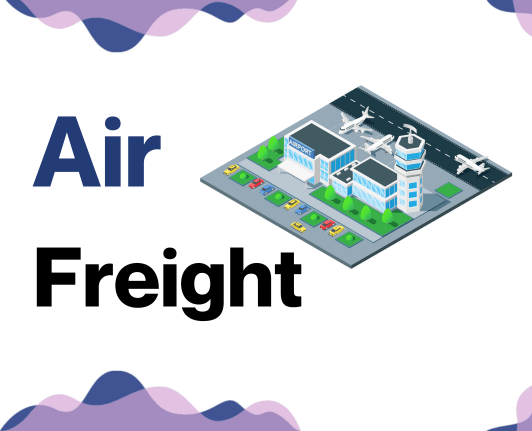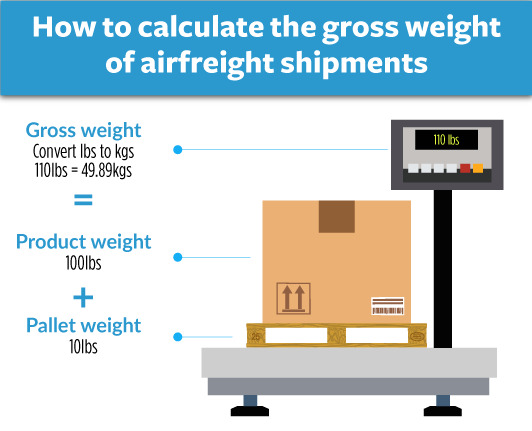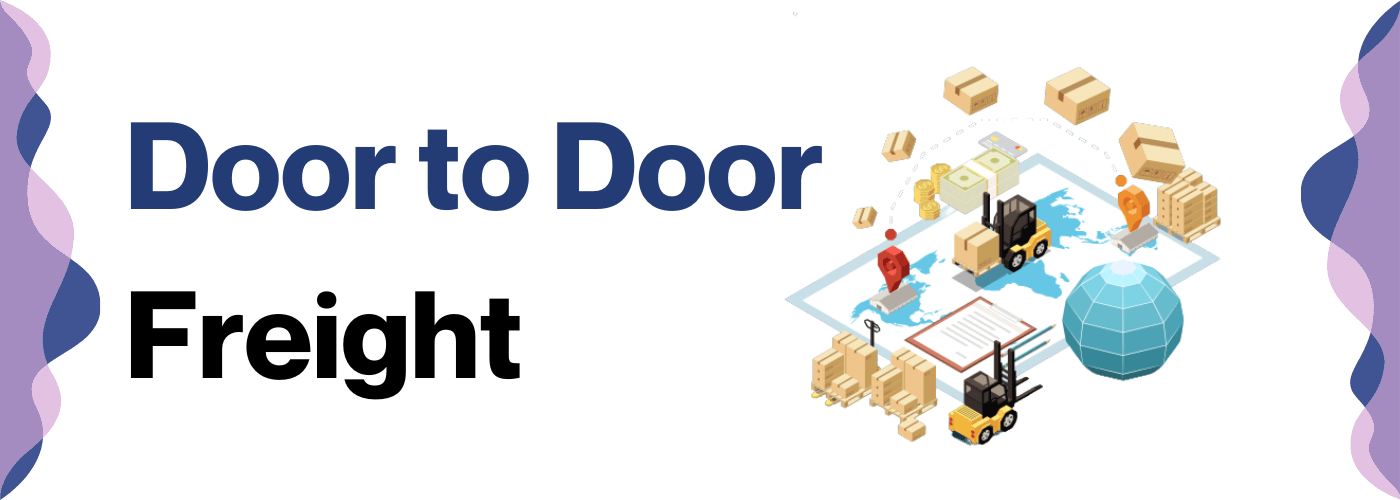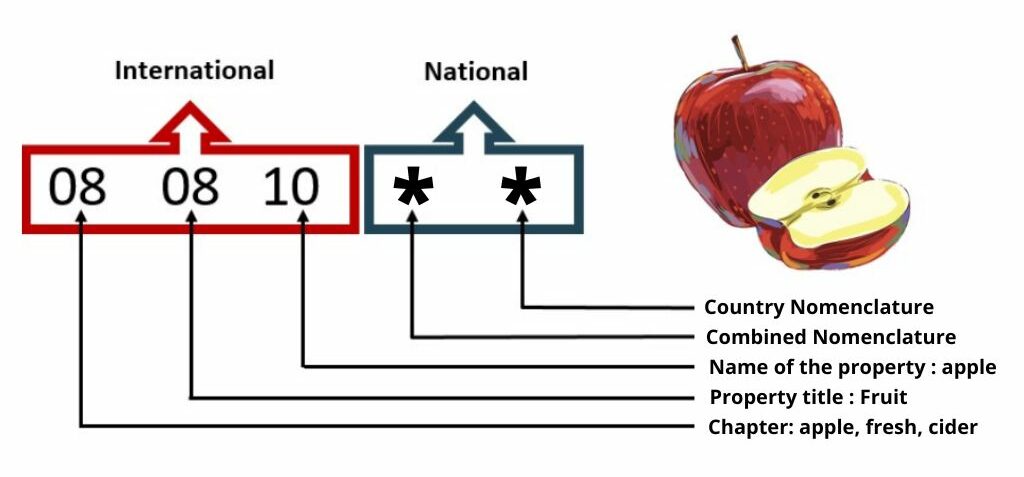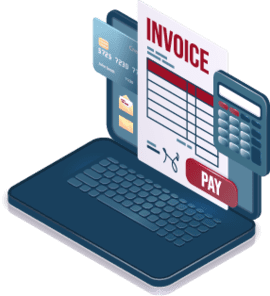Why did the cargo ship become a trendy Starbucks drink? Because it's always a latte in transit! On a more serious note, the intricate web of freight transportation between Malaysia and Mexico can trigger more questions than answers. From grappling with fluctuating rates, deciphering transit timelines, to decoding complex customs regulations, this guide aims to iron out these common pain points you might encounter. Expect to unravel various freight options, achieve a clearer understanding of the customs clearance process, comprehend duties and taxes, and gain valuable business-suited advice. If the process still feels overwhelming, let DocShipper handle it for you! As an experienced international freight forwarder, we meticulously manage every step of your shipping journey, transforming seemingly insurmountable challenges into resounding victories for your business.
Table of Contents
Which are the different modes of transportation between Malaysia and Mexico?
Bridging the sprawling distance from Malaysia's vibrant markets to Mexico's lively cities might seem like a daunting task. Imagine the journey as a game of hopscotch - the further the squares, the more challenging the game. With numerous borders to hop across, air transport emerges as the swiftest player. Yet, where speed takes precedence, cost takes a backseat. For budget-focused businesses, ocean freight becomes the friendly turtle, slow but economical. Each shipping need strikes a unique rhythm, thus picking the right transport dance partner - swift bird or steady turtle - becomes pivotal for a harmonious international trade ballet.
How can DocShipper help?
Considering shipping goods between Malaysia and Mexico? Look no further, DocShipper is here to simplify the process. We manage every detail-from transport organization to customs clearance. Want to receive a free estimate in less than 24 hours? Got a query? Our consultants are just a call away. Connect today!
DocShipper Tip: Sea freight might be the best solution for you if:
- You're dealing with hefty quantities or oversized goods. Sea transport is your go-to for maximizing space without stretching your budget.
- Time sensitivity isn't a concern for your shipment. Ocean freight is known for its leisurely pace, especially when compared to the speed of air or rail.
- Your supply chain connects key international harbors. This positions you to take full advantage of a wide-reaching network of ocean trade routes.
Sea freight between Malaysia and Mexico
Ocean shipping between Malaysia and Mexico forms a vital trade link, ferrying high-volume goods in an affordable and efficient manner, despite the slower transit time. The bustling port of Port Klang in Malaysia and the vibrant port of Veracruz in Mexico, together, create an essential maritime bridge, connecting vital economic centers in both countries. It's like a long, steady conveyor belt across miles of ocean, continuously moving goods right where they're needed.
However, like trying to ride a bike through a bustling city, maneuvering through the myriad of shipping regulations, customs protocols, and logistical challenges can feel overwhelming. Errors here are not just discouraging; they can potentially lead to costly shipment delays or, at worst, legal complications. But fret not! We'll touch upon the common pitfalls, best practices, and 'must-know' specifications that will help smooth out those intimidating bumps on your shipping journey. Grab your notepad, because this section is going to be your map through the intricacies of ocean shipping between Malaysia and Mexico.
Main shipping ports in Malaysia
Port Klang
Location and Volume: Found in the western part of Peninsular Malaysia, Port Klang holds pivotal importance in Malaysia's trading due to its strategic location near the capital city, Kuala Lumpur. It boasts a shipping volume of over 13 million TEUs annually.
Key Trading Partners and Strategic Importance: It's the main gateway for importers and exporters in Central and Northern Peninsular Malaysia due to its extensive connections to the country's transportation system. Notable trading partners include China, Singapore, USA, and Japan.
Context for Businesses: If you intend to access the Malaysian market or further connect to Southeast Asia, Port Klang will play a vital role in your logistics, due to its position and robust infrastructure supporting a variety of cargo types.
Port of Tanjung Pelepas
Location and Volume: Situated at the eastern entrance of the Straits of Malacca, the Port of Tanjung Pelepas (PTP) is a key stopover on the global East–West trade route, with a shipping volume of more than 12 million TEUs per year.
Key Trading Partners and Strategic Importance: PTP has achieved significant milestones in Asia in terms of efficiency, making it a favored port among the world's top shipping lines. Key trading partners include China, the United States, Hong Kong, and Australia.
Context for Businesses: If you're looking to optimize your goods' port to port time as part of your global supply chain, Tanjung Pelepas can be considered due to its remarkable efficiency and strategic location.
Port of Penang
Location and Volume: Nestled in the North of Peninsular Malaysia, the Port of Penang is an integral hub due to its strategic position on the Malacca Strait, experiencing a shipping volume of over 1.5 million TEUs annually.
Key Trading Partners and Strategic Importance: Serving as a major link in international shipping, the port’s significant trading partners consist of Singapore, China, Indonesia, the United States, and Thailand.
Context for Businesses: If your goal is to reach the thriving markets in Northern Malaysia, the Port of Penang could prove pivotal given its comprehensive facilities and ease of access.
Bintulu Port
Location and Volume: Positioned in Sarawak on the island of Borneo, Bintulu Port is vital due to its prime role in distributing LNG globally with an annual shipping volume crossing 38 million tonnes.
Key Trading Partners and Strategic Importance: Its strategic significance lies in its status as the world's largest LNG production facility. Key trading partners include Japan, Korea, and Taiwan.
Context for Businesses: If you're involved in the LNG sector, Bintulu Port would be an essential node of your shipping strategy due to its special concentration on LNG exports.
Johor Port
Location and Volume: Located in Pasir Gudang in Southern Peninsular Malaysia, Johor Port's importance stems from its comprehensive range of facilities, handling a shipping volume of 36 million freight weight tonnes annually.
Key Trading Partners and Strategic Importance: A critical multi-purpose port in this region, its key trading partners include Vietnam, Australia, Indonesia, India, and Thailand.
Context for Businesses: If you're set on broadening your company's reach in Southeast Asia, servicing a wide range of cargo types, Johor Port might answer to your needs given its flexibility to provide multipurpose services.
Kuantan Port
Location and Volume: Located in the East Coast region of Peninsular Malaysia, Kuantan Port is critical for shipping goods, particularly to and from the eastern and northeastern Asian regions, with an annual shipping volume approaching 27 million freight weight tonnes.
Key Trading Partners and Strategic Importance: It plays an essential role in Malaysia's East Coast Economic Region (ECER) projects. Key trading partners include China, Singapore, Hongkong, Australia, and India.
Context for Businesses: If you're aiming to tap into the rapidly growth ECER project or expanding in the ASEAN region, Kuantan Port can serve as a vital shipping hub given its strategic location and proximity to large projects.
Main shipping ports in Mexico
Port of Veracruz
Location and Volume: Located on the Gulf of Mexico, the Port of Veracruz is one of the oldest and largest ports in the country. With a shipping volume of over one million TEU, it's crucial for international trade and accommodates various types of cargo.
Key Trading Partners and Strategic Importance: Its key trading partners include the United States, China, and Canada. The port's strategic importance is heightened by its sophisticated infrastructure and proximity to major highways and rail lines, making it a vital gateway to central Mexico.
Context for Businesses: If you're looking to expand your operations in central Mexico or North America, the Port of Veracruz is worth considering due to its multimodal connectivity and high capacity.
Port of Manzanillo
Location and Volume: Situated on the Pacific coast of Mexico in the state of Colima, the Port of Manzanillo is another high-traffic port, handling over 2.8 million TEU annually.
Key Trading Partners and Strategic Importance: It maintains significant trade relations with Asia, especially China and Japan. The port hosts Mexico's largest container terminal and serves as a critical transshipment and gateway location for Pacific trade routes.
Context for Businesses: The Port of Manzanillo is vital for businesses with substantial trade in the Pacific region, especially with Asian markets. Its capacity and infrastructure can effectively support high-frequency shipping needs.
Port of Lazaro Cardenas
Location and Volume: Located in the state of Michoacán on Mexico's Pacific coast, the Port of Lazaro Cardenas is quickly growing, managing over a million TEU.
Key Trading Partners and Strategic Importance: The port's main trade partners are China, Japan, and the United States. Known for its deep-water facilities, it can accommodate large container vessels, making it instrumental in international trade.
Context for Businesses: If your business frequently uses large container ships or has heavy trade with Pacific countries, the Port of Lazaro Cardenas could be a pivotal part of your logistics strategy thanks to its deep-water capacity.
Port of Altamira
Location and Volume: The Port of Altamira is located on the Gulf of Mexico, about 20 miles north of Tampico. Handling around 700,000 TEU annually, it's an essential part of the Mexico-Texas freight corridor.
Key Trading Partners and Strategic Importance: The port shares substantial trade relations with the United States, Europe, and Central America. Its strategic location aligns with the primary industrial and manufacturing zones.
Context for Businesses: Businesses targeting markets in the southern United States or Central America will find the Port of Altamira highly advantageous due to its location and its robust connections to industrial hubs.
Port of Ensenada
Location and Volume: Located in the state of Baja California, on the Pacific Ocean, the Port of Ensenada handles over 200,000 TEU per year and accommodates a wide range of cargo.
Key Trading Partners and Strategic Importance: The port extensively engages in trade with Asia and the Western United States. As the second port of call from Asia to Mexico, it plays a key role in Pacific trade routes.
Context for Businesses: If your business is looking to penetrate the Pacific markets or the Western United States, the Port of Ensenada could ideally fit into your logistics plan, given its strategic location and versatility in handling diverse cargo.
Port of Coatzacoalcos
Location and Volume: Located in Veracruz, along the Coatzacoalcos River and Gulf of Mexico, this port handles about 300,000 TEU per year.
Key Trading Partners and Strategic Importance: Engaging mainly in trade with the United States, Europe, and Central America, the port also stands as a crucial hub for Mexico's chemical and petroleum industries.
Context for Businesses: Businesses involved in the petrochemical industry or wishing to access markets in the eastern United States and Europe should consider the Port of Coatzacoalcos for its industry-specific infrastructure and convenient location.
Should I choose FCL or LCL when shipping between Malaysia and Mexico?
Selecting between Full Container Load (FCL) and Less than Container Load (LCL), also known as consolidation, is like playing a strategic game of chess in the world of sea freight. This decision will sculpt your shipping experience, manipulating factors like cost, delivery time, and the overall triumph of your goods transportation between Malaysia and Mexico. Dive into the following content for your tailored guide on picking the perfect option. Make the winning move today for your business!
LCL: Less than Container Load
Definition: Less than Container Load (LCL) shipping is a cost-effective method for moving smaller volumes of goods. It involves consolidating your cargo with others to fill a container, thus splitting the costs.
When to Use: If your cargo volume doesn't reach the minimum required for a full container (around 13-15 CBM), then you should consider LCL shipment. Not only is it more affordable, but it also offers flexibility as you can ship goods as and when needed instead of waiting for enough goods to fill an entire container.
Example: Consider a company that manufactures specialised electronic components in Kuala Lumpur, Malaysia. They receive an order from a customer in Mexico City for a small batch of products that would only fill a quarter of a container. With LCL freight, they don't have to wait for additional orders to fill a whole container but can ship the products immediately, saving time and satisfying their customer's immediate demand.
Cost Implications: With LCL, the cost is usually determined by the volume of the goods you're shipping rather than the weight. While sharing the cost of a container can be economical, remember to factor in possible fees from multiple handling steps during the consolidation and de-consolidation process, which isn't present in full container shipping.
FCL: Full Container Load
Definition: FCL, or Full Container Load, refers to the exclusive use of a shipping container, usually a 20'ft or 40'ft container, during maritime transportation. This option, known as FCL shipping, ensures that the entire container space is dedicated to your cargo alone.
When to Use: FCL is especially advantageous when you have a high volume of goods to transport. If your cargo surpasses 13/14/15 cubic meters (CBM), you'll benefit more from FCL. This is not only cheaper for high-volume shipments but also offers a higher level of safety. Since the FCL container is sealed at the origin and won't be opened until it reaches the destination, your goods are less likely to be damaged or lost.
Example: Let's say you're a wholesaler of electronics based in Malaysia and need to transport 1000 units of the latest smartphone model to your retail partners in Mexico. Each unity occupying approximately 0.015 CBM, the total volume would be 15 CBM, therefore a 20ft FCL shipping would be your best choice.
Cost Implications: Getting an FCL shipping quote can provide accurate insights on the cost involved. Although the upfront cost might appear higher than LCL (Less than Container Load), remember FCL is more cost-effective for larger volumes and the added security it provides could save your business from potential loss.
Unlock hassle-free shipping
Unsure about choosing between consolidation or full container for your cargo shipping from Malaysia to Mexico? At DocShipper, we aim to clear your confusion and eliminate the hassle. Our ocean freight experts evaluate your unique needs, considering factors like the volume of goods, budget, and timeframe. Let us help you make the right choice and streamline your shipping process. Connect with us for a free estimation today. Shipping just got simpler!
How long does sea freight take between Malaysia and Mexico?
Transporting goods between Malaysia and Mexico? Your sea freight's journey typically takes an estimated 26-30 days on average. These transit times vary based on several factors like the specific ports used, how much your shipment weighs, and the nature of your goods. For a more precise quote tailored to your unique shipping needs, don't hesitate to reach out to a competent freight forwarder such as DocShipper.
As a guide, we've assembled a table below showcasing the average transit times for sea freight between the major freight ports in both countries:
| Malaysia Ports | Mexico Ports | Average Transit Time (in days) |
| Port Klang | Port of Manzanillo | 26 |
| Port of Tanjung Pelepas | Port of Veracruz | 26 |
| Port of Penang | Lázaro Cárdenas | 27 |
| Bintulu Port | Puerto Madero | 29 |
*Please note that these times are approximate, and actual shipping times may differ.
How much does it cost to ship a container between Malaysia and Mexico?
Unpacking the complex world of shipping costs, particularly ocean freight rates between Malaysia and Mexico, isn't a one-size-fits-all task. Here's why: the cost per CBM (cubic meter) fluctuates, primarily based on factors like your cargo's Point of Loading and Destination, the carrier chosen, the nature of your goods, and even the pulse of monthly market trends. This makes pinning down an exact figure tricky, to say the least. But don't worry, our dedicated shipping specialists are committed to personalizing your quote, ensuring you get the most value for your unique logistics needs. Your shipping cost isn't left to guesswork – it’s tailored to your specific journey, every time.
Special transportation services
Out of Gauge (OOG) Container
Definition: OOG containers are specifically designed for units that don't fit into standard containers due to their size.
Suitable for: Goods that are oversized or heavy, which are beyond the dimensions of standard containers.
Examples: Machinery, construction equipment, boats, and industrial components often use OOG containers for transportation.
Why it might be the best choice for you: If your shipment has non-standard dimensions or weight that exceeds typical shipping containers, then Out of gauge cargo would be ideal for you, ensuring safe and efficient transit.
Break Bulk
Definition: Break bulk shipping involves goods that are loaded individually, and not in containers, onto a vessel.
Suitable for: Loose cargo loads that are unpackaged or are too large or heavy for standard containers.
Examples: Steel rods, timber, sacks of commodities like sugar or grain, are often transported using break bulk.
Why it might be the best choice for you: For goods that cannot be containerized due to shape or size, break bulk can provide a feasible, cost-effective solution.
Dry Bulk
Definition: Dry bulk refers to the transportation of homogenous, unpackaged goods in large quantities, such as coal or grain.
Suitable for: Commodities that can be poured and hence, transported in large quantities.
Examples: Items shipped in this way include iron ore, coal, cement, grain, and sugar.
Why it might be the best choice for you: If you're aiming to transport massive quantities of homogenous commodities, this could be perfect as it enables efficient high-volume shipping.
Roll-on/Roll-off (Ro-Ro)
Definition: A ro-ro vessel is designed to carry wheeled cargo, such as cars, trucks, and trailers which roll on and roll off the ship under their own power or using a platform vehicle.
Suitable for: Wheeled and tracked vehicles, heavy machinery and oversized cargo.
Examples: Ideal for shipments of automobiles, tractors, buses, motorhomes, and trucks.
Why it might be the best choice for you: If you're shipping large vehicles or heavy machinery that can be driven, this method ensures the quickest and safest maneuvering on and off the vessel.
Reefer Containers
Definition: Refrigerated containers are temperature controlled, allowing goods to be transported at their required temperature setting.
Suitable for: Perishables and goods requiring temperature control.
Examples: Pharmaceuticals, seafood, meat, fruits, vegetables, dairy products, and sensitive plants.
Why it might be the best choice for you: If you're dealing with temperature-sensitive cargo, reefer containers maintain the required temperature throughout, ensuring the cargo remains fresh and safe from origin to destination.
With DocShipper, navigating through these options and finding the best one that suits your business needs is simplified. Contact us for a free shipping quote in less than 24 hours!
DocShipper Tip: Air freight might be the best solution for you if:
- You're pressed for time or facing a non-negotiable deadline. Air freight delivers unparalleled speed when it comes to transit times.
- Your shipment is modest in size, falling under 2 CBM. Air freight is particularly well-suited for these smaller consignments.
- Your supply chain includes destinations that are off the beaten maritime or rail paths. Air freight gives you access to a comprehensive global airport network.
Air freight between Malaysia and Mexico
If you're seeking speed and reliability in shipping goods from Malaysia to Mexico, air freight's the way to go. Picture your expensive electronics delivery winging its way across the globe, and being at your customer's door in a matter of days, not weeks. But here's the catch - a slight miscalculation in cost estimation, like not applying the right weight formula, can make your bill soar. It's like playing darts blindfolded. Many shippers stumble here, and it's akin to unknowingly digging a hole in your pocket. We'll help you dodge these pitfalls and harness air freight's full potential. Let's demystify the process together.
Air Cargo vs Express Air Freight: How should I ship?
If you're planning to fly your goods from Malaysia to Mexico, you have two options: traditional air cargo, which flies in the cargo hold of passenger airlines, or express air freight, whisking your merchandise on a dedicated plane for even faster delivery. This guide will help you to make the best choice for your business - let's get your goods on the move!
Should I choose Air Cargo between Malaysia and Mexico?
Air cargo between Malaysia and Mexico is a reliable choice for shipping goods, particularly for freight over 100 -150 kg. Prominent airlines like Malaysia Airlines and Aeromexico offer cost-effective rates for your cargo needs. Though transit times may be longer due to fixed schedules, the reliability more than balances it out. This choice might align well with your budgetary considerations while ensuring your cargo reaches its destination efficiently. It's clear, weighing the pros and cons, air cargo becomes an attractive option for your freight requirements.
Should I choose Express Air Freight between Malaysia and Mexico?
Express air freight, a dedicated service using cargo-only planes, is an ideal option especially when you're dealing with shipments under 1 CBM or weighing 100/150 kg (220/330 lbs). Firms like FedEx, UPS, and DHL specialize in such services, ensuring fast and reliable deliveries. When shipping from Malaysia to Mexico, time might be critical. Whether it's urgent spare parts or valuable merchandise, express air freight provides a speedy solution. So, if swift delivery and secure handling are high on your priority list, this could be your go-to choice. Remember, it might be a costlier approach, but the benefits often outweigh the extra expense.
Main international airports in Malaysia
Kuala Lumpur International Airport
Cargo Volume: Approx. 813,827 metric tons (as of 2023)
Key Trading Partners: China, USA, Japan, Singapore, Germany
Strategic Importance: As the busiest cargo airport in Malaysia, it is a central hub for international trade.
Notable Features: Includes state-of-the-art cargo handling facilities and special storage conditions for a variety of goods.
For Your Business: With its modern facilities and strategic location, KLIA can offer you fast and efficient cargo handling. Its connections to major trading partners can open up new markets for your goods.
Penang International Airport
Cargo Volume: Approx. 304,238 metric tons (as of 2023)
Key Trading Partners: Indonesia, China, Japan, Vietnam, India
Strategic Importance: Home to major cargo airlines, it plays an essential part in the moving of goods, especially for northern region businesses.
Notable Features: Specializes in cargo handling services for perishable items and communication equipment.
For Your Business: If your business specializes in perishable goods or electronics, Penang International Airport can ensure the swift, safe transit of delicate products with its specially equipped facilities.
Sultan Abdul Aziz Shah Airport
Cargo Volume: Approx. 23,760 metric tons (as of 2023)
Key Trading Partners: China, India, Singapore, Japan, Thailand
Strategic Importance: Serving as secondary hub after KLIA, it provides important strategic value as an alternative airport.
Notable Features: Offers private jet services and caters to high-end cargo flights.
For Your Business: If your business involves transporting high priority or high-value goods, this airport's premium services could offer an advantage, providing top-tier care for your shipping needs.
Kota Kinabalu International Airport
Cargo Volume: Approx. 32,186 metric tons (as of 2023)
Key Trading Partners: Australia, Brunei, Indonesia, Philippines, China
Strategic Importance: As the main airport in East Malaysia, it's a vital link to Borneo and its international trading partners.
Notable Features: Recognized for its facilities specialising in transporting agricultural products.
For Your Business: If your operations involve agricultural products, this airport’s specialized facilities and access to agricultural regions can ensure efficient transport and minimize potential spoilage of your goods.
Kuching International Airport
Cargo Volume: Approx. 26,257 metric tons (as of 2023)
Key Trading Partners: China, Singapore, Brunei, Indonesia, Philippines
Strategic Importance: Serves as a primary gateway to Sarawak's business sector, catering to both domestic and international traffic.
Notable Features: Known for a strong connection to regions with timber, it's a crucial player in the export of wood-based cargo.
For Your Business: If your business is involved in moving timber or other wood products, this airport could play a key part in your export strategy. Its connections to major markets make it an attractive hub for forestry goods.
Main international airports in Mexico
Benito Juarez International Airport
Cargo Volume: As the busiest airport in Mexico and Latin America, Benito Juarez handled over 576,000 metric tons of cargo in 2023.
Key Trading Partners: The major trading partners are the USA, Canada, and China, but its worldwide network allows connections to Europe and South America as well.
Strategic Importance: The airport is strategically located in Mexico City, the economic hub of the country, facilitating rapid inland distributions.
Notable Features: Benito Juarez Airport offers 24/7 operations and has multiple cargo terminals equipped to handle everything from perishables to hazardous materials.
For Your Business: If your goal is to quickly reach a large consumer market, Benito Juarez could be an excellent entry point for your goods, thanks to its vast distribution network and efficient handling capabilities.
Guadalajara International Airport
Cargo Volume: Handling over 354,000 metric tons of cargo in 2023, it's the 2nd busiest airport in Mexico for freight transport.
Key Trading Partners: Strong links with the USA, Asia, and Europe.
Strategic Importance: Located in the western region of the country, the airport provides primed access to lucrative Pacific trade routes.
Notable Features: Houses several global cargo operators, has modern storage facilities and an express cargo terminal.
For Your Business: Due to its cargo handling systems and proximity to Pacific trade routes, this airport can serve as an effective hub for your import/export operations.
Monterrey International Airport
Cargo Volume: Monterrey International Airport handled over 201,000 metric tons of cargo in 2023.
Key Trading Partners: Noteworthy relations with the USA, particularly Texas.
Strategic Importance: Located in northern Mexico’s industrial region, it's a key port for transport to the USA and northern Mexican states.
Notable Features: Offers the OMA Cargo Logistic Center, an integrated logistics services terminal.
For Your Business: If your business involves frequent shipments to the USA or northern Mexico, Monterrey Airport’s location can provide shorter transit times and rapid inland transportation.
Cancun International Airport
Cargo Volume: Though better known for passenger traffic, Cancun Airport facilitated about 50,000 metric tons of cargo in 2023.
Key Trading Partners: Trade relations mainly with the USA, Europe, South America and Central America.
Strategic Importance: Being the second busiest airport of Mexico for passenger traffic, it offers numerous airline connections globally.
Notable Features: Houses a courier center aiding in efficient express cargo deliveries.
For Your Business: If your shipment includes perishable goods or time-critical items, Cancun’s well-established network of passenger airlines could provide additional cargo space and flight frequency options.
Tijuana International Airport
Cargo Volume: In 2023, the airport handled over 41,000 metric tons of cargo.
Key Trading Partners: Major trade connectivity with the USA, primarily California, and Asia.
Strategic Importance: Its location at the US-Mexico border makes it ideal for cross-border trade.
Notable Features: Houses the Cross Border Xpress, an enclosed pedestrian bridge for direct transit between San Diego and the Tijuana Airport.
For Your Business: If your business needs tight supply chain integration between the USA and Mexico, Tijuana International’s unique cross-border facilities might be a perfect choice.
How long does air freight take between Malaysia and Mexico?
On average, air freight shipping between Malaysia and Mexico takes between 6-10 days. Please bear in mind, this is simply an estimate and actual timings can deviate. Factors such as your specific airports of origin and destination, the weight of goods, and their particular nature can seriously impact transit times. For a precise, tailored time frame, it is highly recommended to consult with a freight forwarder like DocShipper.
How much does it cost to ship a parcel between Malaysia and Mexico with air freight?
The cost of shipping air freight parcels between Malaysia and Mexico can greatly vary due to factors such as distance between departure and arrival airports, dimensions, weight, and nature of goods. A rough estimation for shipping can be around $3-$10 per kg, but specific pricing is hard to pinpoint. We stand by to provide a tailored quote for each individual shipment, ensuring you receive competitive rates. We consider every detail so you don't have to. Reach out to our team and receive a free quote in less than 24 hours. Let us navigate the complexities for you.
What is the difference between volumetric and gross weight?
Gross weight refers to the actual weight of your shipment, including packaging and pallets, measured in kilograms (kg). On the other hand, volumetric weight evaluates the space your shipment occupies in relation to its weight, also measured in kg.
In Air cargo, the volumetric weight is calculated by measuring your package in centimeters (height x width x length) and dividing the result by 6000. Let's take a shipment of 100cm length, 50cm width, and 50cm height as an example. The volumetric weight would be (100 x 50 x 50) / 6000 = 416.67 kg, or about 919 lbs.
For Express Air Freight, the divisor is 5000 instead of 6000. So, in our example, the volumetric weight would be (100 x 50 x 50) / 5000 = 500 kg, or about 1102 lbs.
Now, let's suppose the gross weight of our shipment is 450 kg (or approximately 992 lbs). For the Air cargo, despite the gross weight being higher, the freight charges would be based on the volumetric weight (416.67 kg) as it's the higher of the two.
Understanding the differences between gross and volumetric weight is essential because freight charges are determined based on the higher of the two. This approach ensures optimal use of the carrier's space while accounting for the shipping cost considerations.
DocShipper tip: Door to Door might be the best solution for you if:
- You value convenience and want a seamless shipping process, as door-to-door takes care of every step from pickup to delivery.
- You prefer a single point of contact, as door-to-door services typically provide a dedicated agent to handle all aspects of the shipment.
- You want to minimize the handling of your goods, reducing the risk of damage or loss, as door-to-door minimizes transitions between different modes of transport.
Door to door between Malaysia and Mexico
Providing a seamless journey for your goods, door to door shipping serves as your international delivery concierge, ferrying items from Malaysia to Mexico without the stress of dealing with different carriers or customs clearance. Involving fewer hands, it tends to result in less damage and delay. So, ready to discover the smooth convenience of door to door shipping? Let's dive in!
Overview – Door to Door
Shipping goods from Malaysia to Mexico doesn't have to be a hair-pulling maze. Consider 'door-to-door' shipping - a stress-free route that's dear to our clients at DocShipper. This comprehensive service covers the long journey logistics, customs clearance, and delivery, freeing you from the process complexities. But remember, cost and delivery times might peak. Nonetheless, its ability to address directly your shipping concerns makes it a worthy trade-off. Welcome a hassle-free international shipping experience!
Why should I use a Door to Door service between Malaysia and Mexico?
Ever tried to juggle flaming torches while riding a unicycle? Coordinating international shipping can often resemble such an act. But fear not! 'Door to Door' service between Malaysia and Mexico is your secret weapon for streamlining the process. Here are five reasons why you might pick this magician of freight services:
1. Stress-Less Logistics: An intricate network of carriers is behind every shipment. Door to Door service takes full responsibility for your goods transportation – from pickup to delivery. It's like having a skilled juggler in your corner, effortlessly keeping your logistics balls in the air.
2. Sure-Fire Timeliness: Do you have time-sensitive shipments that can't afford delays? With door to door service, there'll be no more nail-biting. The service ensures punctual delivery, making 'urgent' its middle name.
3. Specialist Care for Complex Cargo: Shipping oddly shaped, delicate, or hazardous items? This service ensures that your precious cargo is handled with special care, tailoring solutions to fit any complex shipping requirements.
4. Total Reliability: Handing your package over to a Door to Door service is like entrusting it to a trustworthy friend. They'll navigate through the shipping maze to bring your goods straight to the destination. Consistency and dependability define their every move.
5. Ultimate Convenience: Say goodbye to coordinating different services for different legs of the journey. From trucking to the final unloading, Door to Door service is your one-stop-shop for complete delivery solutions. That's truly hassle-free shipping!
Door to Door service really is your circus ringmaster of shipping from Malaysia to Mexico, taming the logistics beast and turning potential chaos into a harmonious, smoothly running operation. So, why spin plates when you could be sipping coffee, confident your goods are in skilled hands?
DocShipper – Door to Door specialist between Malaysia and Mexico
Experience seamless and stress-free door-to-door shipping from Malaysia to Mexico with DocShipper. Our team, proficient in all logistics domains, handles every aspect of your goods' transportation, from packing and shipping via air, sea, road, or rail, right through to customs clearance. Be at peace knowing we provide a dedicated Account Executive for personalized guidance. Reach out for a free estimate within just 24 hours or engage with our consultants at zero cost. DocShipper promises a hands-off, all-encompassing logistics solution.
Customs clearance in Mexico for goods imported from Malaysia
Customs clearance - an essential, yet intricate part of importing goods from Malaysia to Mexico. Every step, from calculating duties to figuring out quotas, is riddled with potential setbacks like unforeseen fees or even having your goods stuck at the border. Mastering the nuances of customs taxes, quotas, and licenses is vital to avoid these pitfalls. This guide will explore these areas in detail for smooth crossing of your goods. Remember, DocShipper has the expertise to assist you through this labyrinth, ensuring successful delivery of any kind of goods worldwide. Need an estimate for your project? Just reach out with your goods' origin, value, and HS code. We’re here to simplify your journey.
How to calculate duties & taxes when importing from Malaysia to Mexico?
Choosing the right path when importing goods from Malaysia to Mexico can feel like navigating a maze, but it all begins with understanding your product's details. Let's say you're importing raw materials or finished products - to estimate customs duties, you'll need to delve into specifics like the country of origin, the Harmonized System (HS) Code, the Customs Value, the Applicable Tariff Rate and other potentially applicable taxes and fees.
Now, if you're wondering how to begin, the first crucial step is to clearly identify the country where the goods were produced or manufactured. Suppose your goods are made in Malaysia. In that case, you're well on your way to understanding your duty obligations when shipping them over to Mexico. You see, a product's origin country plays a significant role in determining applicable tariffs and duties, and it's that piece of information that'll pave the way for a smoother import process. So, grab your shipping documents, let's set sail for successful trade.
Step 1 - Identify the Country of Origin
Knowing the country of origin, in this case Malaysia, has prime importance in international shipping for five core reasons:
1. Trade Agreements: Malaysia and Mexico have specific trade pacts. These deals offer lower or duty-free import tariffs on products and goods.
2. Import Regulations: Mexico imposes particular restrictions on goods from different nations. Knowing the precise origin lets you remain compliant with Mexican import laws and evade hefty fines.
3. Calculation of Duties: Customs and Border Protection use the country of origin to calculate import duties. It influences both the rate and the type of tax you pay.
4. Goods Tracking: The country of origin tag aids in tracking the shipment.
5. Compliance with Consumer Laws: Some consumer laws mandate that products must show their country of origin. It ensures consumer safety and product authenticity.
Keeping abreast of trade relations between Mexico and Malaysia helps you cut costs and optimize your shipping operations. Being aware of how each agreement affects your import duties creates more informed business decisions, saving your pocket from unexpected charges. Remember, knowing and following import restrictions safeguards you from penalties on restricted goods. This knowledge is practical, doable, and helps gear up your business import game.
Step 2 - Find the HS Code of your product
The Harmonized System (HS) Code is a standardized numerical method of classification for traded products. It's used by customs authorities around the world to identify products for the application of duties and taxes. In essence, the HS code serves as an international language for goods, facilitating international trade.
One straightforward way to determine this code is to inquire about it from your supplier. Since they're closely acquainted with the product they're exporting, suppliers are generally well-informed regarding related customs regulations and classifications.
If for any reason that proves unattainable, don't despair. We're providing a solution here with an easy step-by-step guide to find the HS code independently. Firstly, you'll need to access the HS lookup tool provided by the United States International Trade Commission via this link: Harmonized Tariff Schedule.
Once you're on the webpage, type in the name of your product into the search bar. Once the search process concludes, check the 'Heading/Subheading' column - this is where you'll find your product's HS code.
Now, let's sound a note of caution: accuracy is integral when determining the HS Code. If you use the incorrect code, your shipment can experience delays, and you might face potential fines. So ensure to double-check your product's HS code before using it in official documentation.
Here's an infographic showing you how to read an HS code.
Step 3 - Calculate the Customs Value
Decoding the term 'customs value' might seem tricky, but it's pretty straightforward. Unlike the product value, which is essentially the price you paid for your goods, the customs value is a bit more encompassing. It's the CIF value (Cost, Insurance, Freight), meaning it includes the product's cost, insurance, and shipping charges. So, if you bought items worth $1000, paid $200 for shipping, and $150 for insurance from Malaysia to Mexico, the customs value isn't $1000. It's $1350. This total CIF value determines the duty you'll pay at Mexican customs. It's crucial to calculate accurately for a smooth customs clearance process. Remember, the devil is in the details when it's about international shipping.
Step 4 - Figure out the applicable Import Tariff
An import tariff is essentially a tax imposed by the receiving country on imported goods. Its value is determined by the type of goods (classified by the HS code) and the country of origin.
For trading between Malaysia and Mexico, the preferential tariff system is in place and the applicable import tariff can be searched on Mexico's Tax Administration Service website. Here are the steps:
1. Open the 'Tariff Information System' on their website and select 'English' for language.
2. Enter the HS code that we've identified for your goods - let's say 6403, for footwear.
3. Select Malaysia as the country of origin.
You'll then see the preferential tariff rate applicable for importing your product from Malaysia to Mexico. Let's assume this rate is 20%.
Now, let's calculate the import duties. Suppose your CIF (Cost, Insurance, and Freight) for the goods costs you USD 10,000. The import duty you need to pay would be 20% of USD 10,000, giving you USD 2,000.
By understanding your applicable tariff rates and how to calculate your import duties, you can strategize your finances better and alleviate any potential concerns.
Step 5 - Consider other Import Duties and Taxes
Importing goods from Malaysia to Mexico involves not just the standard tariff rate, but often several other import duties, which can vary based on the origin county and product type. Take 'Excise Duty', for instance. This is an additional cost that's charged on certain goods like tobacco or alcohol. These rates can fluctuate, so it's essential to stay updated on the current charges.
Another import duty is the 'Anti-Dumping Tax'. This is applied to products sold at less than their normal value, usually when they're imported in mass quantities. So, if you're considering importing a large number of goods, keep this tax in mind.
Now, let's talk about the most crucial charge - the Value Added Tax (VAT). In Mexico, the general VAT rate is 16%, although it could be reduced or even exempted depending on the nature of the good. For example, consider you are importing goods valued at $1000. The computation of VAT will be $1000 x 16/100, which equals $160. However, it's important to note that this is a hypothetical calculation - you'll need to use the actual values during your transaction for accurate results.
Remember, these duties can significantly impact the final cost of your imported goods, so ensuring proper financial planning before making a move can save you from unexpected expenses. Always consider consulting an import specialist to understand the detailed implications better.
Step 6 - Calculate the Customs Duties
Calculating customs duties can be challenging, but it's crucial to grasp, especially when shipping goods from Malaysia to Mexico. This is where the goods’ customs value, VAT (Value Added Tax), anti-dumping taxes, or even Excise Duty come into play.
Here are the cases simplified :
1. Case one: Your shipment has a customs value of $5,000, and a duty rate of 10%; your customs duty would be $500 ($5,000 0.1).
2. Case two: With a customs value of $7,000, a duty rate of 15%, and VAT of 16%, first calculate customs duty ($1,050), then VAT on the total sum of customs value and duty ($7,000 + $1,050) 0.16 = $1,288.
3. Case three: A customs value of $10,000, a duty rate of 20%, VAT of 16%, anti-dumping tax at 25%, and Excise Duty at 5%; your customs duty is $2,000. Figure out anti-dumping tax ($2,500), add these two to the customs value, then calculate VAT (($10,000 + $2,000 + $2,500) 0.16 = $2,400) and lastly, calculate the Excise Duty (($10,000 + $2,000 + $2,500 + $2,400) 0.05 = $850).
As experts in international logistics, DocShipper can handle every step of your customs clearance anywhere globally, ensuring you don't get overcharged. Contact us for a free 24-hour quote. It's about your peace of mind, let us do the heavy lifting.
Does DocShipper charge customs fees?
As a custom broker in Malaysia and Mexico, DocShipper incurs customs clearance fees – not to be confused with customs duties and taxes that go straight to the government. Think of it like a restaurant bill: the cost of your meal (duties and taxes) goes to the restaurant, whereas the service charge (clearance fees) goes to the waiter (DocShipper). We provide all related documents from the customs office to ensure you pay only what's mandated, making the process transparent and worry-free for you.
Contact Details for Customs Authorities
Malaysia Customs
Official Name: Royal Malaysian Customs Department
Official Website: http://www.customs.gov.my/en/
Mexico Customs
Official name: Servicio de Administración Tributaria (SAT)
Official website: https://www.sat.gob.mx/
Required documents for customs clearance
Grappling with customs procedures? This guide takes the mystery out of all ‘document-speak’. We’ll untangle the Bill of Lading, Packing List, Certificate of Origin, and Documents of Conformity (CE standard) to ensure your shipments pass through customs hassle-free. Stay tuned!
Bill of Lading
Your first line of action when shipping between Malaysia and Mexico is securing your Bill of Lading. Think of it as your shipment's passport, a proof of ownership transfer from sender to receiver. More than just a receipt, it's a contract defining your cargo's journey. Got an urgent shipment? Consider an electronic or 'telex' release, speeding up the delivery process with a digitized version, making hold-ups at border checks a thing of the past. If you're going for air shipments, remember the AWB (Air Waybill), a must-have document just like the Bill of Lading. Practical tip - keep your documents ready before shipping starts, you'll thank yourself when your goods breeze through customs without a hitch.
Packing List
When shipping goods from Malaysia to Mexico, crafting a precise and thorough Packing List is a task you just can't afford to overlook. This document, comprehensively itemizing every single item in the shipment, forms the basis for all related shipping and customs procedures - be it via ocean or air freight. Picture this - you're shipping mechanical parts, but the packing list inaccurately states 'computer components.' In the complex world of customs, such ambiguity could result in hold-ups, or worse, penalties. Maintaining accuracy is paramount, and the margin for error is virtually nonexistent. So, next time you create your Packing List, remember - it's not just administrative paperwork, but the backbone of a seamless international shipping operation.
Commercial Invoice
A Commercial Invoice is your shipment's passport between Malaysia and Mexico. It includes all essential details like seller's and buyer's info, product description, total value, and more—making it a crucial asset for seamless customs clearance. Remember, consistency is key. All info on your Commercial Invoice should align with your Bill of Lading or Airway Bill to dodge hefty fines or shipping delays. So, let's say you're shipping Selangor-made semiconductors to Tijuana. Painstakingly check all data, especially product descriptions and harmonized codes, match across all documents. It'll fast-track your goods right through customs. Your business demands precision—let your Commercial Invoice reflect it.
Certificate of Origin
Navigating the customs terrain between Malaysia and Mexico? Take note, your shipments may benefit from a Certificate of Origin. This document, denoting your goods' country of manufacture, is a customs linchpin. Why's this critical? Well, suppose you're exporting Mexican silver crafts to Malaysia. By correctly stating Mexico as the country of origin, you might unlock preferential duty rates under existing trade agreements! It's your cost-saving ticket, making your business more competitive. Don't skimp on accuracy, though; incomplete or incorrect information could leave your shipment stranded at customs. Stay ahead of the game.
Get Started with DocShipper
Smooth out your Malaysia-Mexico shipping journey with DocShipper! We expertly navigate complex customs clearance processes for you, ensuring your goods reach their destination stress-free. Ready for a hassle-free, efficient shipping experience? Contact us now for a no-obligation quote delivered to you within 24 hours. Let's make international shipping easier together!
Prohibited and Restricted items when importing into Mexico
Understanding what you can and can’t ship into Mexico is a big deal – one wrong move can cause costly delays or fines, right? Let's clear your doubts about the prohibited and restricted items for importing into this country to make your trading process smoother.
Restricted Products
- Pharmaceutical Products : You have to apply for a Sanitary License from the Federal Commission for Protection against Sanitary Risks.
- Food and Beverages : For these goods, you'll need a permit from the Ministry of Health.
- Agricultural Products : To import these, you must get clearance from the National Health, Safety and Food Quality Service.
- Chemicals : If you're looking to import chemicals, you'll need a license from the Secretary of Environment and Natural Resources.
- Firearms and Explosives: You have to get permission from the Secretary of National Defense.
- Live Animals and Animal Products: To carry these across, you will need a permit from the Ministry of Agriculture and Rural Development.
- Alcohol and Tobacco: For these, a special permit is required from the Tax Administration Service.
Ensure to always double-check the individual requirements for each item, as these can change over time and additional licenses or permits might be needed.
Prohibited products
- Narcotics and illegal drugs, including hallucinogens, marijuana, opium, heroin, and others without a qualified license
- Guns, explosives, and ammunition, as well as other weaponry without the necessary permits
- Certain protected animal species and their byproducts, unless accompanied by a Convention on International Trade in Endangered Species (CITES) permit
- All plants and plant products without the appropriate sanitary import permits
- Cultural artifacts and national treasures, unless with a valid export permit
- Counterfeit materials and pirated goods, including music, DVDs, software, and brand-name items
- Unsafe food items that are not prepared according to proper health rules
- Poultry and poultry products originating from or routed through Asia, South Africa, and several European countries
- Meat and meat products from certain countries negotiating / dealing with livestock diseases
- Endangered & threatened wildlife species, fish, or plants, whether alive or dead
- Pollutants and hazardous wastes
- Cars older than 8 years from the current year, unless they are classical or antique
- Foreign-made alcohol and tobacco products, exceeding the permitted quantity for personal use
Are there any trade agreements between Malaysia and Mexico
Yes, Malaysia and Mexico share a robust economic relationship but currently, they lack any official Free Trade Agreements (FTAs) or Economic Partnership Agreements (EPAs). However, active participation in the Asia Pacific Trade Agreement (APTA) and ongoing discussions of broadening their cooperation through the Trans-Pacific Partnership (TPP) signal future opportunities. Any developments could streamline your shipment process and reduce costs. So, keep a tab on these prospective trade amendments to maximize your international shipping advantage.
Malaysia - Mexico trade and economic relationship
Malaysia and Mexico enjoy a lively trading relationship with an upward trajectory since the establishment of diplomatic ties in 1975. A pivotal moment was the inclusion of Malaysia in Mexico's Proyecto De Integración Y Desarrollo de Mesoamérica (Mesoamerican Project) in 2019, magnifying partnership in strategic sectors like petroleum and electrical & electronic products, among which liquid crystal devices top the list. As of 2023, bilateral trade exceeded MYR 18,5 Billion, a testament to their flourishing economic synchronization. Mexico remains among the biggest investors in Malaysia, signifying its belief in Malaysia's growth potential. As part of an ever-growing economic alliance, the onward economic and trade dialogues promise great potential for progressive escalation in diverse sectors. Understanding these dynamics can offer invaluable insights to businesses looking to expand trade operations between the two nations.
Your Next Step with DocShipper
Taking the stress out of shipping between Malaysia and Mexico, DocShipper's expert team handles all aspects of your freight needs. We organize transport, navigate customs, and ensure seamless delivery. Why deal with the hassle when you can have professionals take the helm? Contact us now for smooth and worry-free shipping.
Additional logistics services
Explore how DocShipper streamlines your supply chain! Beyond shipping and customs, we're your one-stop solution, handling everything from warehousing to distribution. Simplify logistics with us today!
Warehousing and storage
Sorting reliable warehousing in Malaysia or Mexico can be a juggling act, especially when your goods require specific conditions like temperature control. Don't let the logistics overwhelm you; DocShipper's got your back! Hop over to our dedicated page Warehousing for a lowdown on how we help businesses tackle these challenges head-on.
Packaging and repackaging
When shipping goods from Malaysia to Mexico, proper packaging is crucial not only for the item's protection, but also to pass customs inspections smoothly. Find a reliable partner like Docshipper who can handle this meticulous task across products, from delicate antiques to machinery, helping to avoid transit damage and customs issues. More info on our dedicated page: Freight Packaging.
Cargo insurance
With transport insurance, you're covered beyond just mishaps caused by fire. While fire insurance responds to damage from blaze, transport insurance covers the unexpected inflicted by the journey, such as damage from rough handling or moisture. Think of a consignment of electronics braved choppy waters but succumb to sea air corrosion. Complexities solved! Check more detailed insights on our dedicated page: Cargo Insurance.
Supplier Management (Sourcing)
Struggling to source and manufacture for your supply chain? DocShipper offers a helping hand across Asia, East Europe, and beyond. We'll become your bridge to overcome language obstacles, scout the right suppliers, and manage your procurement process from start to finish. For example, we can match you with high-quality rubber manufacturers in Malaysia for delivery to Mexico. The process is hassle-free. More info on our dedicated page: Sourcing services.
Personal effects shipping
Moving precious, bulky items from Malaysia to Mexico can be a real chore. We're all about handling your cherished belongings with utmost care, ensuring everything arrives safely. From fragile art collections to unwieldy furniture, our team has got you covered. Experience seamless transitioning at its finest. More info on our dedicated page: Shipping Personal Belongings
Quality Control
Maintaining product quality and compliance during manufacturing and shipping from Malaysia to Mexico is crucial. Our Quality Control services help you avoid costly recalls, non-compliant penalties, or damage to your brand image. Visualize it like the quality-check points at a car assembly line, catching faults early on, saving significant rework cost. Put quality in your control and ensure smooth logistics process. More info on our dedicated page: Quality Inspection
Product compliance services
Ensuring your shipment adheres to all regulations is pivotal. Our Product Compliance Services help you avoid mishaps by conducting detailed lab tests for obtaining the necessary certifications. For instance, a toy manufacturer needing safety certifications can turn to us for comprehensive support, ensuring smooth transit and worry-free customs clearance. Interested in delving deeper? Visit our dedicated page: Product compliance services.
FAQ | For 1st-time importers between Malaysia and Mexico
What is the necessary paperwork during shipping between Malaysia and Mexico?
In order to facilitate the transfer of your goods from Malaysia to Mexico, there are some essential documents you need to provide. Our team at DocShipper will directly handle the bill of lading for sea shipments or air waybill for air consignments. On your part, we will require a packing list and a commercial invoice. Depending on the nature of your goods, additional documents might be necessary, such as Material Safety Data Sheets (MSDS) and various certifications. This ensures a smooth process and prompt delivery. Rest assured, we are here to guide you every step of the way and handle the complex details.
Do I need a customs broker while importing in Mexico?
Yes, engaging a customs broker when importing into Mexico is highly advised. The import process can be intricate with mandatory procedures, specific details, and necessary documentation that needs to be accurately provided. It's easy to feel overwhelmed! That's where we at DocShipper step in. We specialize in representing your cargo during customs clearance for most shipments. This means we coordinate with the customs authority on your behalf, ensuring smooth, efficient, and hassle-free customs procedures.
Can air freight be cheaper than sea freight between Malaysia and Mexico?
We know the costs of freight can be a key concern. Generally, whether air freight is cheaper than sea freight between Malaysia and Mexico hinges on a range of factors, including the route and nature of your cargo. If what you're sending weighs less than 300 kg (660 lbs) or is less than 1.5 Cubic Meters, air freight could indeed be a competitive option worth considering. Rest assured, at DocShipper, your dedicated account executive will assess these factors comprehensively for your unique situation to provide you with the most cost-effective option. We are committed to satisfying your shipping needs in the most efficient way.
Do I need to pay insurance while importing my goods to Mexico?
While insurance coverage for shipping your goods to Mexico is not strictly required, we at DocShipper highly advise taking this extra measure. There are unforeseen incidents such as damage, loss, or theft that can occur during the transportation process. Opting for insurance is a proactive way to ensure your goods are protected during their journey. This provides both peace of mind and financial security, making it a sensible choice in most cases.
What is the cheapest way to ship to Mexico from Malaysia?
Considering the significant geographical distance between Malaysia to Mexico, sea freight will be your most cost-effective shipping option. It's ideal for bulk shipping or if you're not time-constrained. However, keep in mind that it's slower since transit time might take up to several weeks. Hence, we recommend planning your shipment well in advance to allow adequate time for logistics handling, customs clearance, and delivery.
EXW, FOB, or CIF?
Choosing between EXW, FOB, or CIF may depend on the relationship you have with your supplier. Remember, your supplier may not be an expert in logistics, so it's advisable to entrust the process, specifically the international freight and the process at the destination, to a logistics agent like us here at DocShipper. Commonly, suppliers sell under EXW (your goods are available for pick-up at their factory's door) or FOB (inclusive of all local charges till the port of origin). But no matter what terms your supplier uses, we can ensure a seamless door-to-door service for you. Rely on us for comprehensive shipping solutions you can trust.
Goods have arrived at my port in Mexico, how do I get them delivered to the final destination?
When your goods reach their destination port in Mexico under CIF/CFR incoterms, you'll require a custom broker or freight forwarder to facilitate customs clearance and delivery to the final location. You'll need to cover import charges. Alternatively, our DocShipper team can handle these tasks under DAP incoterms. Contact your devoted account executive for verification.
Does your quotation include all cost?
Rest assured, our quotations encompass everything except for destination duties and taxes. At DocShipper, we strive to maintain transparency, ensuring no hidden fees catch you by surprise. Should you need it, your dedicated account executive is always on hand to produce an estimate of potential duties and taxes.
